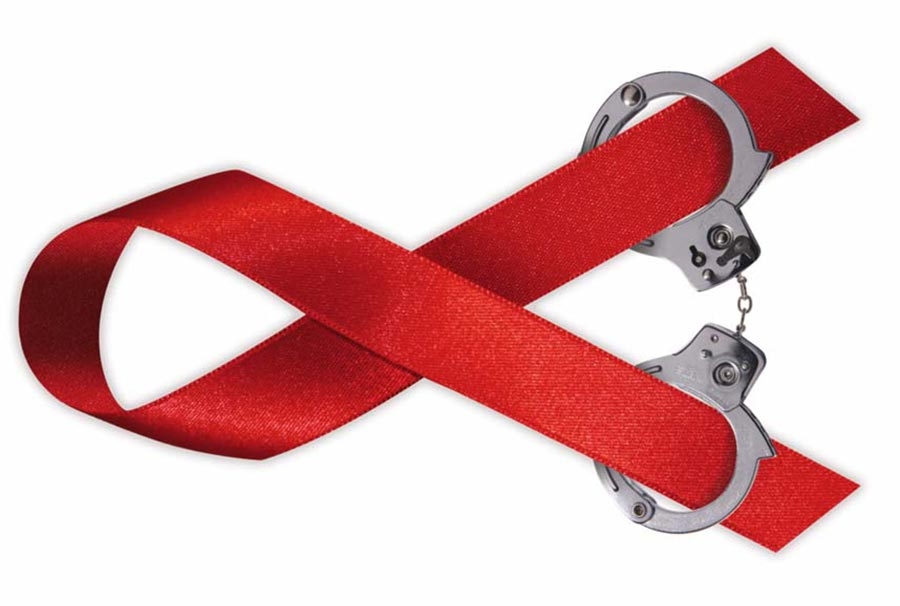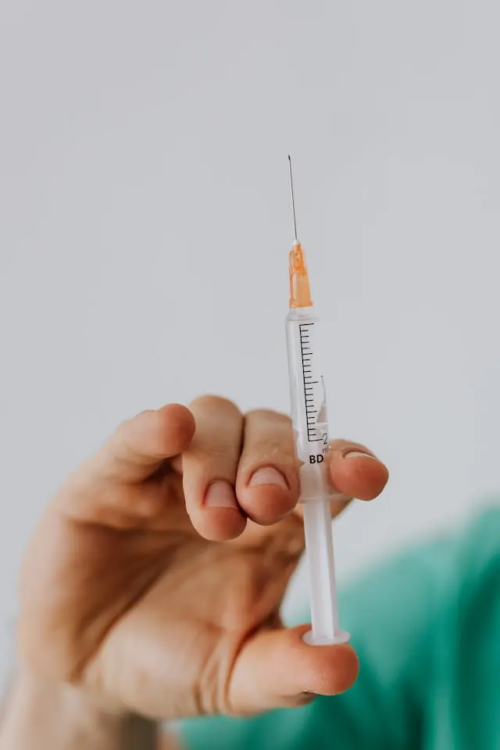
A man who hid his HIV status from his partner was arrested in Mexico City.
Juan “N”‘s partner discovered that he had the disease when she discovered his medication.
The Mexico City Attorney General’s Office (FGJCDMX) announced that an arrest warrant had been served on a man, identified as Juan “N”, who allegedly intentionally infected a woman who was his partner with HIV.
“Following an investigation initiated by the possible commission of the crime of danger of contagion, agents of the Investigation Police (PDI) of the Mexico City Attorney General’s Office (FGJCDMX), served an arrest warrant against a man, for his probable participation in the aforementioned crime,” the agency said in a statement.
According to the investigations, it was in August 2019 when the man’s then partner found medication against the sexually transmitted disease in Juan’s house. She alleged that the man never revealed to her that he was living with the virus, and when she considered herself at risk of being infected, she made the complaint.
This afternoon the PDI agents, attached to the Coordination of Compliance and Enforcement of Injunctions, located the man in the streets of the Pedregal de Santo Domingo colony, Coyoacán, where he was notified of the court order against him.
Juan, who is 32 years old, was transferred to the Reclusorio Preventivo Varonil Norte, where he was placed at the disposal of the control judge who wanted him.
The rise of HIV
Earlier this year it was reported that 72% of the municipalities with the highest number of new cases are in the southeast of the country, warned Alethse de la Torre Rosas, Director of the National Centre for the Prevention and Control of HIV/AIDS.
The highest rates of HIV deaths are registered in southern states such as Veracruz, Campeche and Quintana Roo.
The average HIV/AIDS incidence rate for men in these municipalities is 33.8 and for women 11.5. When the same analysis is carried out, distinguishing the incidence rate between men and women, some distinctions are observed:
201 priority municipalities for men and 195 for women. In both cases, most of them are located in the south-eastern region of the country.
The priority municipalities for HIV, marked as High-High (red), i.e. clusters of neighbouring municipalities with high incidence rates, are 181.
Spatial patterns in the distribution of HIV incidence identified in the High-High category were identified in the states of Baja California, Campeche, Colima, Chiapas, CDMX, Guerrero, Mexico, Michoacán, Morelos, Nayarit, Oaxaca, Quintana Roo, Tabasco, Tlaxcala, Veracruz and Yucatán.
The ten priority municipalities with the highest recorded HIV incidence rates (High-High category) are in the states of Veracruz, Quintana Roo and Chiapas.
Globally, women and girls account for 48% of all new HIV infections, and in Mexico, one in five people living with HIV are cis and trans women. Eight out of 10 women living with HIV acquired the infection through a steady partner.
“It is important that antiretroviral treatment is available to reduce vertical transmission. We have access to treatment in the country if a woman living with HIV is diagnosed at the end of pregnancy and this will significantly reduce the risk of transmission of the infection from mother to child by 95 per cent.
Un sujeto que ocultó a su pareja que padece VIH fue detenido en la Ciudad de México
La pareja de Juan “N” descubrió que éste padece la enfermedad, al descubrir sus medicamentos.
La Fiscalía General de Justicia de la Ciudad de México (FGJCDMX) dio a conocer que cumplimentaron una orden de aprehensión contra un hombre, identificado como Juan “N”, quien presuntamente contagió de VIH intencionalmente a una mujer que fue su pareja.
“En seguimiento a una indagatoria iniciada por la posible comisión del delito de peligro de contagio, agentes de la Policía de Investigación (PDI) de la Fiscalía General de Justicia de la Ciudad de México (FGJCDMX), cumplimentaron una orden de aprehensión contra un hombre, por su probable participación en el citado ilícito”, informó la dependencia a través de un comunicado.
De acuerdo con las investigaciones, fue en agosto de 2019 cuando la entonces pareja del hombre encontró en la casa de Juan, medicamentos contra la enfermedad de transmisión sexual. Ella alegó que el hombre nunca le reveló que vivía con el virus, y cuando se consideró en riesgo de ser infectada, realizó la denuncia.
Esta tarde los agentes de la PDI, adscritos a la Coordinación de Cumplimiento y Ejecución de Mandamientos Judiciales, localizaron al hombre en calles de la colonia Pedregal de Santo Domingo, alcaldía Coyoacán, donde se le notificó de la orden judicial en su contra.
Juan, quien tiene 32 años de edad, fue trasladado al Reclusorio Preventivo Varonil Norte, donde fue puesto a disposición del juez de control que lo requería.
El aumento del VIH
A principios de este año se dio a conocer que el 72% de los municipios con mayor número de nuevos casos se encuentran en el sureste del país advirtió Alethse de la Torre Rosas, Directora del Centro Nacional para la Prevención y Control del Vih/Sida.
Las mayores tasas de defunción por VIH, se registran en estados del sur, como son Veracruz, Campeche y Quintana Roo.
La tasa promedio de incidencia de VIH/SIDA en hombres para estos municipios es de 33.8 y en mujeres de 11.5. Cuando se realiza el mismo análisis, distinguiendo la tasa de incidencia entre hombre y mujeres se observan algunas distinciones:
201 municipios prioritarios para el caso de los hombres y 195 para mujeres. Para ambos casos, la mayor parte están ubicados en la región sureste del país.
Los municipios prioritarios para VIH, señalados como Alto-Alto (color rojo), es decir, agrupaciones de municipios vecinos con tasas de incidencia alta son 181.
Se identificaron los patrones espaciales en la distribución de la incidencia por VIH identificados en la categoría Alto-Alto en los estados de Baja California, Campeche, Colima, Chiapas, CDMX, Guerrero, México, Michoacán, Morelos, Nayarit, Oaxaca, Quintana Roo, Tabasco, Tlaxcala, Veracruz y Yucatán.
Los diez municipios prioritarios con las mayores tasas de incidencia registradas de VIH (categoría Alto-Alto), se encuentran en las entidades federativas: Veracruz, Quintana Roo y Chiapas.
A nivel mundial, las mujeres y las niñas representan el 48% del total de nuevas infecciones por VIH y en México, una de cada cinco personas viviendo con VIH son mujeres cis y trans. Ocho de cada 10 mujeres viviendo con VIH adquirieron la infección a través de una pareja estable.
“Es importante que para disminuir esta transmisión vertical existen los tratamientos antirretrovirales. Tenemos en el país acceso a tratamientos en caso de que se diagnostique ya al final del embarazo la mujer viviendo con VIH y que esto va a disminuir significativamente 95 por ciento el riesgo de transmisión de la infección de la mamá hacia la bebé”.




